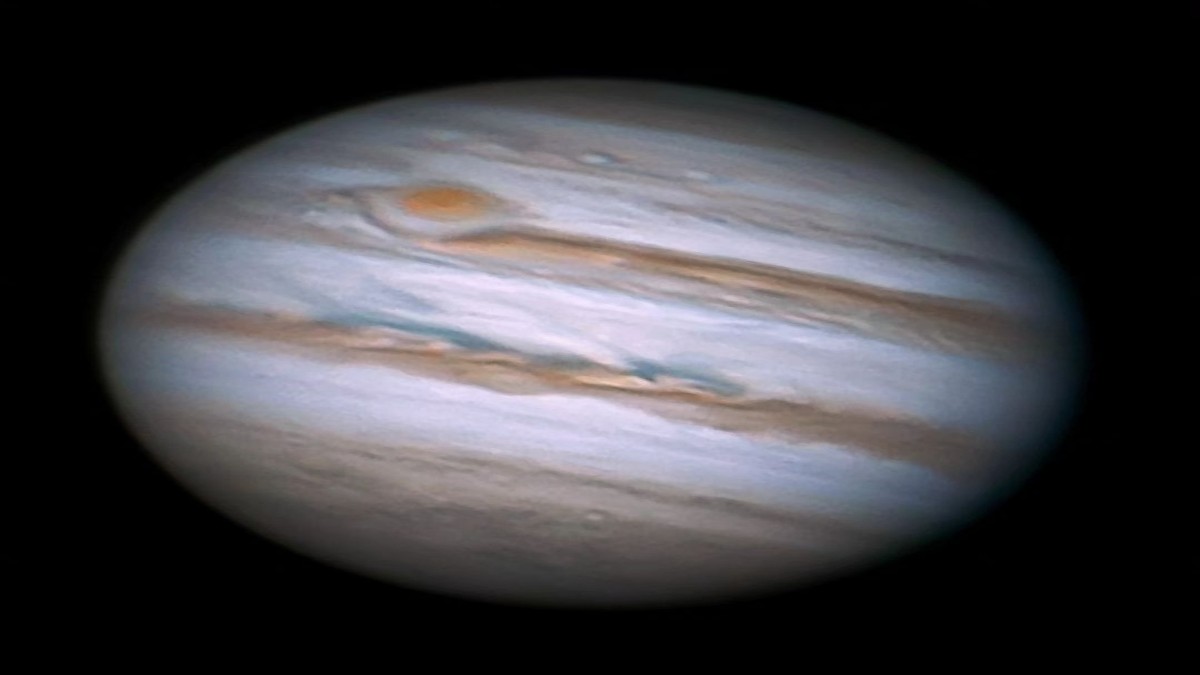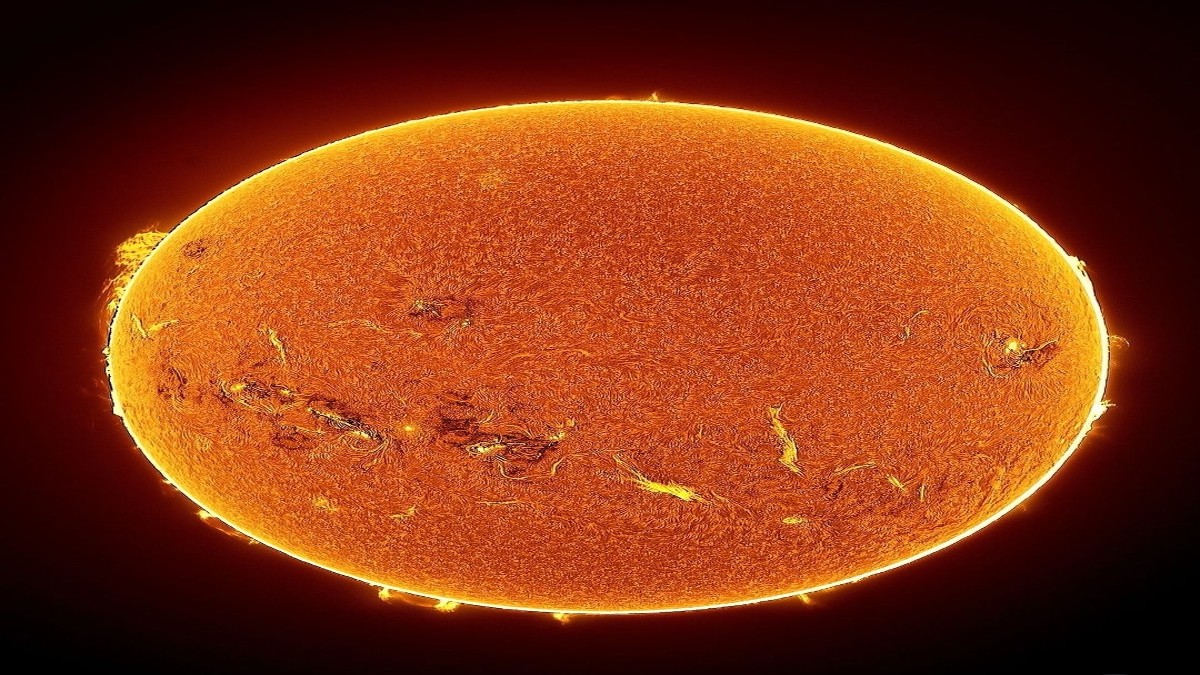
Jupiter
Jupiter, The prospect of finding Earth-like conditions or discovering planets and moons capable of supporting life has long intrigued scientists and space enthusiasts alike. Among the many celestial bodies within our solar system, one of Jupiter’s moons, Europa, has been a focal point of such discussions due to its potential to harbor the necessary conditions for life.
While the idea that Europa could become “another Earth” is still a matter of speculation, scientists are making significant strides in understanding its potential. This article will explore the unique characteristics of Europa, the scientific exploration that has been conducted, its habitability potential, and what the future holds for this icy moon, ultimately delving into the question: Could Europa become another Earth?
Introduction: The Fascination with Europa
Europa, one of the largest moons of Jupiter, was first discovered in 1610 by Galileo Galilei. It is slightly smaller than Earth’s moon, with a diameter of about 3,100 kilometers. For decades, Europa has captured the attention of scientists for several reasons, chief among them being its vast subsurface ocean and the potential that it might harbor microbial life. Unlike some of the other moons in our solar system, Europa stands out due to its unique geological features, dynamic ice shell, and the strong likelihood of liquid water beneath its frozen surface.
The idea that Europa could become “another Earth” is not necessarily about it turning into a habitable planet with breathable air, lush forests, and human civilizations. Instead, the term refers to its potential to support life—whether microbial or more complex organisms—in conditions that could parallel the fundamental requirements found on Earth. With missions like NASA’s upcoming Europa Clipper mission, scientists are hoping to gather more data and understand Europa’s potential for sustaining life.
The Structure of Europa: An Icy World with a Liquid Heart
Europa is distinguished by its smooth, icy surface, which is one of the smoothest in the solar system. This lack of craters or mountains is attributed to the relatively young surface age, with constant geological activity renewing the crust. However, beneath this thick ice shell lies what may be Europa’s most tantalizing feature: a global ocean.
Ice Shell and Surface Features
Europa’s surface is primarily composed of water ice, with long cracks and ridges crisscrossing its expanse. These features suggest that the moon’s surface is constantly being reshaped by tectonic-like processes, where sections of ice shift and interact with each other, potentially driven by the subsurface ocean. The existence of cryovolcanism (volcanoes that spew water instead of lava) further suggests that the ice and water cycles are dynamic, possibly creating conditions similar to Earth’s hydrothermal vents.
The Global Subsurface Ocean
Perhaps the most exciting feature of Europa is the large subsurface ocean that is believed to lie beneath the ice. Current estimates suggest that this ocean could contain more water than all of Earth’s oceans combined. The thick ice layer, which may be several kilometers deep, insulates the liquid water beneath, preventing it from freezing solid. The existence of this ocean has been inferred through measurements of Europa’s magnetic field and gravitational data, as well as observations of plumes of water vapor venting into space.
One of the main reasons this ocean is so fascinating is that liquid water is one of the essential ingredients for life as we know it. If Europa’s ocean is in contact with the moon’s rocky mantle, it could create conditions similar to Earth’s deep-sea hydrothermal vents, where life thrives despite the absence of sunlight. These hydrothermal vents could provide energy and nutrients, potentially making Europa’s ocean a suitable environment for life.
Can Europa Support Life?
The question of whether Europa can support life hinges on several factors, including the chemical composition of its ocean, the presence of an energy source, and the ability to sustain biological processes. For life to exist, certain conditions need to be met, including:
- Liquid Water: This requirement seems to be fulfilled by Europa’s vast subsurface ocean. The presence of liquid water is essential for life as it facilitates chemical reactions and the movement of nutrients.
- Chemical Ingredients: Europa’s surface is primarily composed of water ice, but spectroscopic studies suggest the presence of other compounds, including salts, sulfuric acid, and organic molecules. These compounds could provide the necessary ingredients for life, including carbon, hydrogen, nitrogen, oxygen, phosphorus, and sulfur, which are the building blocks of life on Earth.
- Energy Source: Life on Earth thrives in extreme environments where sunlight is scarce, such as hydrothermal vents deep in the ocean. Europa’s ocean might have similar conditions, where geothermal energy from the moon’s core or tidal heating caused by Jupiter’s gravitational pull could provide the energy needed for life to exist. Tidal heating, in particular, plays a significant role in maintaining the liquid state of Europa’s ocean, as the moon experiences constant gravitational interaction with Jupiter, creating friction that generates heat.
While these factors provide a strong case for Europa’s potential to support life, there are still many unknowns. The composition of Europa’s ocean, its pH levels, salinity, and the abundance of nutrients are still topics of ongoing research. However, the ingredients for life seem to be present, making Europa one of the most promising candidates in the search for extraterrestrial life within our solar system.
The Europa Clipper Mission: A New Age of Exploration
In recent years, NASA has announced plans for the Europa Clipper mission, set to launch in the mid-2020s. This mission will be dedicated to exploring Europa in unprecedented detail. The Europa Clipper spacecraft will conduct dozens of flybys of the moon, using a suite of scientific instruments to map the surface, analyze its composition, and study the subsurface ocean.
One of the mission’s primary goals is to determine the thickness of Europa’s ice shell and the characteristics of the ocean beneath it. Scientists also hope to learn more about the moon’s potential for habitability by examining its chemistry and searching for organic compounds.
The Europa Clipper mission will also study the water vapor plumes that have been observed erupting from Europa’s surface. These plumes could provide a direct way to sample the ocean’s contents without needing to drill through the ice. By flying through these plumes, the spacecraft could collect and analyze particles from the ocean, potentially detecting signs of life or at least the chemical precursors necessary for life.
Challenges and Limitations
Despite its potential, Europa presents several challenges when it comes to habitability and exploration. The thick ice layer that covers its ocean poses a significant barrier to direct exploration. Drilling through kilometers of ice to reach the ocean would require advanced technology and significant resources, and such a mission is not currently feasible.
Additionally, the radiation environment around Europa is harsh, due to its proximity to Jupiter’s strong magnetic field. Any mission to Europa will need to contend with this radiation, which could damage spacecraft and make long-term exploration difficult.
Moreover, even if life exists in Europa’s ocean, it could be in the form of simple microorganisms, rather than complex multicellular organisms. While the discovery of microbial life would be groundbreaking, it would not necessarily make Europa a candidate for human colonization or large-scale habitability like Earth.
Future Prospects: Could Europa Become “Another Earth”?
While the idea of Europa becoming “another Earth” may be more metaphorical than literal, the moon certainly has the potential to teach us a great deal about the possibilities for life beyond our planet. If life exists on Europa, it would suggest that life is more common in the universe than we previously thought, and that it can thrive in environments far different from those on Earth.
However, turning Europa into a fully habitable world for humans is a much more complex challenge. The moon’s thin atmosphere, composed mainly of oxygen, is not breathable, and the harsh radiation environment would make human settlement extremely difficult. Terraforming Europa to make it more Earth-like would require overcoming numerous scientific and technological hurdles, including finding ways to modify its atmosphere, protect against radiation, and maintain a stable climate.
For now, Europa’s greatest potential lies in its ability to expand our understanding of life in the universe. The discovery of life on Europa, even in its simplest forms, would be a monumental achievement, opening up new possibilities for exploration and deepening our understanding of the conditions necessary for life to emerge.
Conclusion: A New Frontier for Space Exploration
In the grand search for life beyond Earth, Europa represents one of the most exciting prospects in our solar system. While it is unlikely that Europa will become “another Earth” in the sense of human habitability, its potential to support microbial life is a possibility that continues to drive scientific inquiry and exploration.
The upcoming Europa Clipper mission will bring us closer to understanding this icy moon and its mysteries. With its subsurface ocean, dynamic ice shell, and the possibility of hydrothermal vents, Europa could reveal important clues about the origins of life and the potential for life in extreme environments.
Whether or not Europa becomes a world where life thrives, its exploration will undoubtedly push the boundaries of our knowledge and provide new insights into the complexities of our universe. As we continue to explore Europa and other celestial bodies, we may come closer to answering one of humanity’s most profound questions: Are we alone in the universe?






